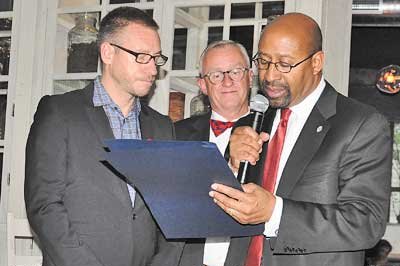By Kevin J. Burns Executive Director, ActionAIDS
In the early days of the AIDS epidemic, grassroots AIDS-service organizations were formed because existing systems were unwilling and, in some cases, unable to provide services to people with HIV/AIDS. There were significant myths about how the disease was spread and significant stigma attached to the behaviors that caused infections. Judgments about people living with HIV/AIDS were rampant and destructive. All of these factors created significant barriers to services for people living with HIV/AIDS. People living with HIV/AIDS had a difficult time accessing social services, medical care, public services and accommodations. AIDS-service organizations were born out of the community to take care of our friends, partners, brothers, sisters, children, fathers and mothers. Community-based AIDS-service organizations worked with people living with HIV to hold public and private institutions accountable. We advocated for equal access for PLWH/A, and we became experts at pushing the envelope, increasing accountability and enhancing the service delivery system. While things have improved, stigma still exists. HIV stigma continues to be a significant barrier to testing, treatment, services and equality.
That core function of removing barriers is as vital today as it was in the beginning of the epidemic. Any of us who have had the need to navigate large systems appreciate how challenging it can be and how helpful it is to have an advocate from outside the “system” to help us get what we need. We have come a long way in achieving equal access to services for people living with HIV, and yet there is still considerable value in having an independent advocate, case manager, health navigator, social worker or whatever you call them, to help maneuver the many hurdles built into the system.
Some of the barriers we face today are the same ones we faced early in the epidemic: homophobia, racism, sexism, poverty, addiction and ignorance. We continue to fight the barriers of shame, guilt and embarrassment about sex and continue to struggle to provide adequate and sufficient age-appropriate sex education for our youth in our schools and at home.
In addition, we face newer barriers. While technology presents many advantages for those in the community with access to it, it can also be a barrier to information and services. How technology is utilized can increase or decrease access to services. Consider the endless voice prompts on answering systems that we have all experienced. I have often been left feeling frustrated, insignificant, diverted or avoided by the voicemail maze. How about you? I was recently struck by a voicemail message about how to access information about emergency service that told the caller to visit the company’s website, making the assumption that the caller had a computer, access to the Internet or even electricity to operate a computer. Ninety-eight percent of the clients we serve at ActionAIDS are living below the poverty level. Most of them do not have computers or Internet access in their homes, and many struggle to keep the electricity on.
Imagine what it would be like to have a case manager who knew the “inside tract” and was actually able to speak to a human being on your behalf? Someone who could make the system work for you, instead of the system making you work. Someone who could help schedule an appointment, get your medications, help you apply for entitlements or find resources for food, clothing and housing. Fortunately, you don’t have to imagine, because The AIDS Law Project, BEBASHI, GALAEI, ASIAC, ActionAIDS and other community-based organizations are here to help you take action.
Independent community-based organizations, with independent volunteer boards of directors and volunteers and staff, have the freedom and institutional support they need to challenge the “system” to provide better services to our clients and the community at large. Our organizations are driven by the needs of the community, with significant consumer and community input. We have the freedom to speak the truth about what is working and what is not working.
Community-based services for people living with HIV/AIDS are located in your communities, your neighborhood and, if needed, your homes. We work to empower your community, your neighborhood and your family and to provide culturally sensitive services to access care and treatment for people living with HIV and to help prevent new infections. Our commitment is that we will continue to be there “until it is over.”

